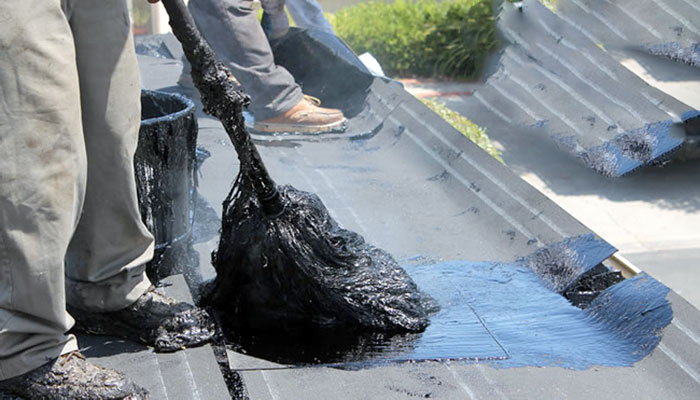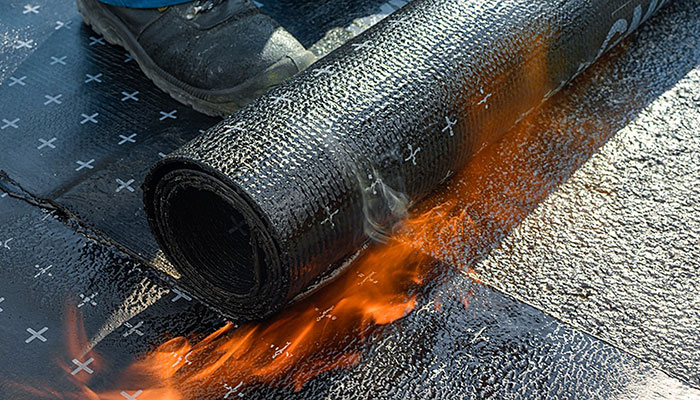Tarring a roof is a very traditional method for protecting your roof from various damages.
Some traditional methods of roofing are replaced by new technologies nowadays. But tarring a roof has successfully remained and gained a trustworthy claim because of many reasons such as its wide usage, cost friendliness, and facilities to protect your roof.
While thinking about tarring a roof, you must know some basics like what is tar, the type of tar to use, does roofing tar get hard, if so how much time is needed in this process, and so on.
Let’s get to know more about roofing tars in this brief discussion.
What is roofing tar?
Roofing tar is a substantial product comprising petroleum and coal-related materials. It is initially used to seal and secure plane roofs.
Tar protects the roof from sunlight, heat, UV rays, rainwater, snow, and many more. Its resistant property to any climate situation makes it very popular among homeowners.
Does Roofing Tar Get Hard
When roofing tar is applied to the roof, it seems to be somewhat in a liquid stage. After a certain period of time, the roofing tar tends to harden up or bond a firm layer on your rooftop.
This hardening mainly depends on the curing process which can take place from anywhere between 8 to 24 hours. The time required for curing can be little more than that, but 8 to 24 hours is a standard timing.
The curing process also can be calculated on temperature, types of tar used, and weather conditions.
If the weather is dewy, snowy, or rainy, do not start the process of tarring. Because in such a situation, the humidity of the weather remains high. Thus, the curing becomes slower and the roof becomes all messy and sticky.

How is it applied
After doing a thorough inspection of your overall roof situation and making a decision to tar your roof, the next thing is to buy roofing tar.
Now, you can start off the process by discussing with a professional what type of tar will be perfect for your roof in certain weather conditions. And if you have selected your option according to your roof, preference, and budget, then just go for it.
Make sure to follow all the precautionary and safety measures related to shoes, avoiding fumes, and so on to prevent any unwanted hazards. The process of applying tar is similar to coloring a roof, just dip the roller into the bucket and each time make a stroke.
Ideal situations to apply tar
In the majority of cases, roofing tars are used for small leaks and holes. Tarring is considered to be a temporary solution eventually, you need to fix roofs if they have large water leakage problems.
Make sure the temperature is 70 to 80 degrees while you tar your roof. Otherwise, the tar will not hard properly and drip down the ceiling, which will create a mess.
Longevity of roofing tar
Roofing tar has fame because of its durability, strongness, and resilience. It is also a cost-effective and budget-friendly option for roof leaking solutions.
If your roof has small flashing where water is leaking, you can try tarring the roof. If tarred properly, a roof can have a lifespan of 25 to 30 years. Such roofs are low maintenance and keep out the water leakage.
Again, if hardened securely, it will protect your roof from the heat along with protecting the plane roofs from rainwater, dust, and wind. This is not needed for slanted roofs as these materials can just slip away along the inclined angle of a slanted roof.
Safety measure
Make sure to always wear proper boots as tar is a poisonous substance. If it gets on your skin, it can cause burns and even major injuries. It also has a bad smell and fumes. So workers are encouraged to wear masks while homeowners are suggested to live elsewhere during the tarring process.
Final Words
Have you found the answer to your questions? I hope so. This article deals with all the roofing tar-related information you might need if you are doing your roof yourself or thinking of hiring a professional.
After tarring roofs, does roofing tar get hard, or how much time is needed is a basic question among the workers. Hopefully, you now have an idea about all of these. You can say roofing tar is not as hard as it seems, so just start the procedure and enjoy it.





